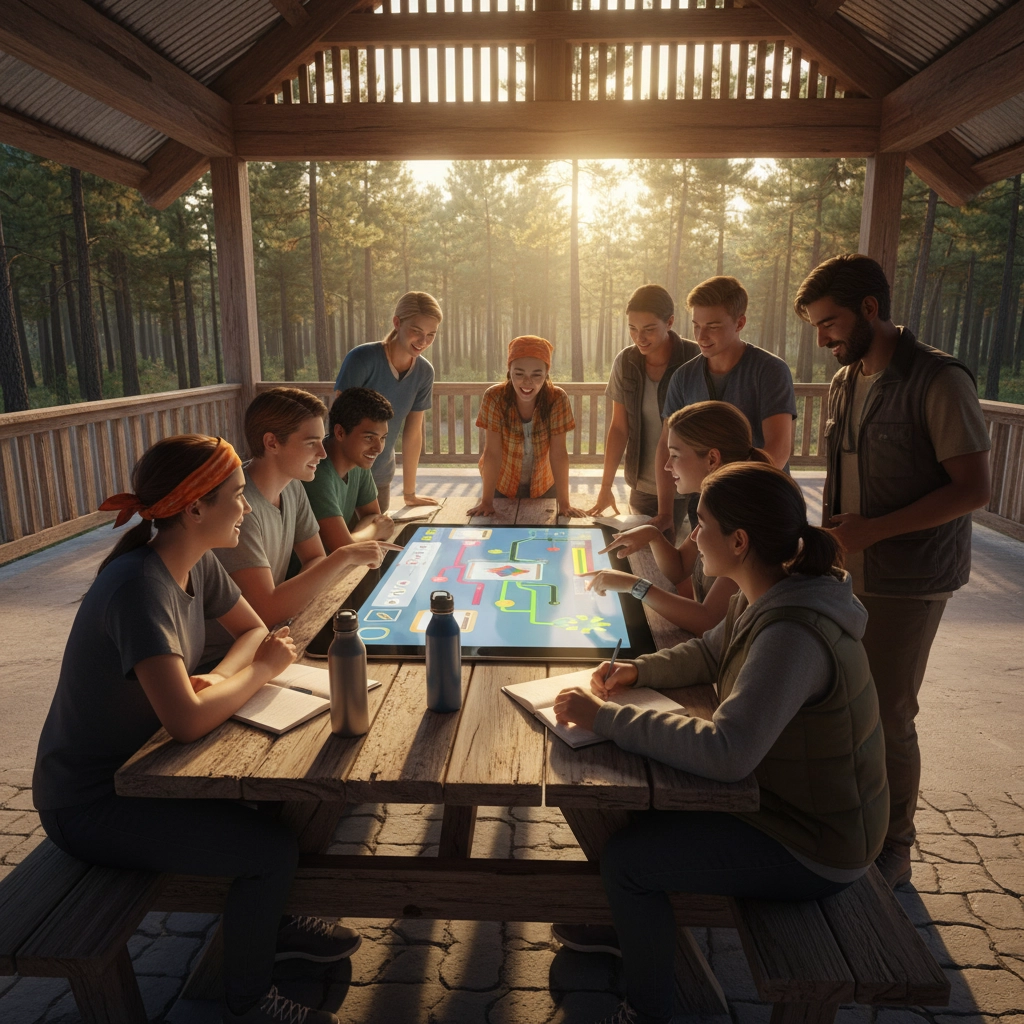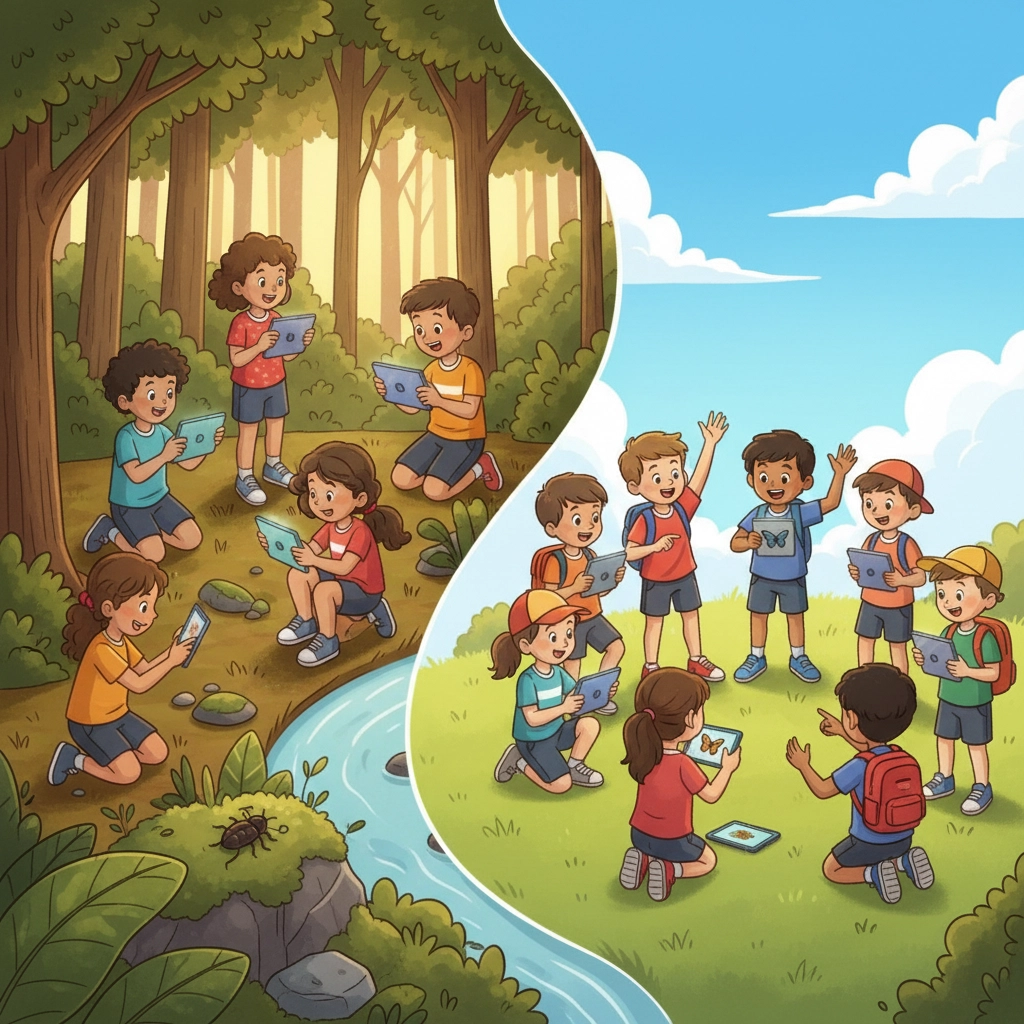The Summer Camp Daily Brief – October 24, 2025
- Matthew Kaufman

- Oct 24
- 5 min read
Story of the Day
Here's a development that might not scream "summer camp news" at first glance, but it carries huge implications for how you design programs, train staff, and build that growth-mindset culture we all love.
A recent article in Inside Higher Ed reveals that ed-tech companies are rapidly embedding AI into learning management systems: but not just to dump more content on people. Instead, they're creating personalized coaching experiences, real-time tutoring support, and dynamic feedback loops that adapt to how each person learns best.
The shift? Moving from "here's your training slideshow" to "here's an experience that responds to you, gives you micro-feedback, and helps you iterate as you go."
For camps: especially when we think about staff orientation, camper programming, and those crucial skill-building moments throughout the summer: this signals something powerful: how we teach matters just as much as what we teach.
And here's the thing that makes this especially relevant right now: Generation Alpha and Gen Z are already comfortable with interactive apps, voice assistants, and AI-powered tools. They expect their learning experiences to be dynamic, not static.
But before you panic about needing to overhaul everything with fancy tech, remember this: the highest impact comes when technology supports reflection, collaboration, and hands-on problem-solving: not when it replaces human connection.
Why It Matters for the Camp World
Think about your last staff training session. Was it mostly "sit and listen," or did people get to practice, reflect, and iterate together? The research coming out of higher education suggests that the latter approach: where humans and tech partner to ask questions and apply insights: creates much stronger learning outcomes.
Here's why this matters for your camp:
Staff training expectations are evolving fast. Younger staff members increasingly expect their professional development to feel relevant, skill-based, and connected to their personal growth: not just camp procedures. They want micro-modules, immediate feedback, and opportunities to practice in low-stakes environments.
Campers are tech-fluent problem solvers in training. Generation Alpha kids have grown up with interactive technology that responds to them. When your activity design meets them where they are: while still building those crucial independent problem-solving skills: you create more engaging experiences.
The sweet spot is human-tech collaboration. The most effective learning happens when technology amplifies human interaction rather than replacing it. Think: using a tablet to capture campers' design ideas, then facilitating a group discussion about what worked and what they'd change next time.
Now is the time to pilot, not perfect. The pace of change in educational technology means waiting for the "perfect" system will leave you behind. Small experiments this season give you real data for bigger innovations next year.

Three Actionable Insights for This Week
1. Revamp One Training Module Using Interactive Design
Pick one staff training component that currently feels static: maybe safety protocols, cabin leadership basics, or activity instruction. Redesign it around the "do-reflect-iterate" cycle.
Here's a simple framework: Present a real scenario, have staff work through it in small groups, then pause for reflection on what worked and what they'd adjust. Use a basic digital tool (even just a shared tablet for recording insights) to capture their thoughts and create a resource for the whole team.
For example, instead of lecturing about homesickness management, present three different camper scenarios. Have staff pairs role-play their responses, then use a quick digital form to gather everyone's strategies. Follow up with a group discussion about which approaches felt most natural and why.
The key is making it interactive and giving people chances to practice before they're in the real moment with campers.
2. Design One Camper Activity That Blends Tech and Reflection
Identify a spot in your programming where you can insert an interactive technology moment that enhances rather than replaces human connection. The goal isn't to add screens for the sake of screens: it's to create opportunities for deeper thinking and collaboration.
Maybe it's an AR scavenger hunt where campers document their discoveries, then gather to share what surprised them and design tomorrow's challenge together. Or a simple tablet-based creation tool where they build something digital, then explain their design choices to the group.
The magic happens in the pause-and-reflect moments: "What did you discover that you didn't expect?" "How would you change this activity for the next group?" "What part was most challenging, and how did you figure it out?"
This approach mirrors what the ed-tech research is showing: technology works best when it creates space for human thinking and problem-solving, not when it does the thinking for us.
3. Build Your "Learning Lab" Culture with Staff
After running any new training approach or activity design, create regular check-in moments with your staff. This doesn't have to be formal: even a 10-minute conversation during your weekly team meeting works.
Ask questions like: "What surprised you about how that worked?" "What felt natural versus forced?" "What would you tweak for next time?" Then: and this is crucial: actually document these insights somewhere your team can access them.
You're building a culture of continuous improvement that treats both staff development and camper programming as ongoing experiments rather than fixed systems. This mindset is exactly what makes camps such powerful learning environments.
Bonus: Practical Tech Integration Tips
As you experiment with blending technology and human-centered learning, keep these guidelines in mind:
Start simple. You don't need virtual reality or expensive software. Mobile devices, basic apps, and simple online forms can create plenty of interactivity without overwhelming your systems or budget.
Maintain accessibility. Always have offline alternatives for staff or campers who prefer them, and ensure any digital tools you use work across different devices and skill levels.
Protect privacy thoughtfully. If you're collecting responses, reflections, or any kind of data: even for internal use: establish clear guidelines about how you'll use and store that information.
Build in human processing time. The most important part happens after the tech interaction, when people talk through what they experienced, learned, and want to try next. Block at least 5-10 minutes for facilitated discussion after any digital component.
Focus on problem-solving skills. Remember that the goal isn't tech fluency for its own sake: it's helping both staff and campers become better independent problem solvers who can use technology effectively when it helps and set it aside when it doesn't.
The camp environment is uniquely positioned to help young people develop healthy relationships with technology precisely because you also provide rich opportunities for device-free connection, hands-on problem solving, and face-to-face collaboration.

The Bigger Picture
What makes this ed-tech trend especially relevant for camps isn't just the technology piece: it's the underlying philosophy. The most effective learning experiences respond to how people actually think, give them chances to practice and iterate, and create space for both individual reflection and collaborative problem-solving.
That's been the camp model all along, hasn't it? The difference now is that we have new tools that can amplify those natural learning processes without replacing the human connections that make camp special.
Whether you're training a first-year counselor or helping a camper master a new skill, the fundamentals remain the same: create safe spaces to try things, build in opportunities for reflection and adjustment, and foster the kind of problem-solving confidence that serves people well beyond camp.
The technology is just one more tool in the toolkit: powerful when used thoughtfully, but never a substitute for the curiosity, empathy, and growth mindset that great camp professionals bring to their work.
Ready to dive deeper into innovative camp programming and staff development strategies? Follow @mattlovescamp on Instagram for daily insights, and join our community of camp professionals at www.ilove.camp for resources, discussions, and support as you build the kind of camp culture that helps everyone thrive.



Comments